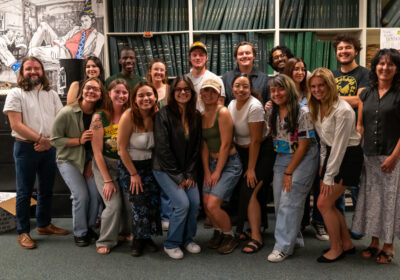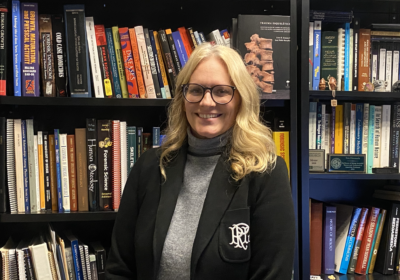Tampa design firm urges city to play

On Thursdays at noon, Tampa residents can play a friendly match of Ping Pong with the Tampa Downtown guides in Lykes Gaslight Square Park. SPECIAL TO THE ORACLE.
Don’t touch the pieces.
Stand behind the line.
No playing.
These are the most common guidelines displayed in places that exhibit art, but a Tampa-based design firm founded by USF alumni is throwing the rulebook out the window.
The Urban Conga, run by Ryan Swanson, constructs installations in cities nationwide centered on getting communities to interact and play with each other.
Originally from Ft. Lauderdale, Swanson moved to Tampa in 2006 to attend USF, where he majored in architecture. He went on do his masters in architecture there as well, ultimately graduating in 2013.
At the time, he had no intention of staying in the city, as he disliked living around the USF area.
“For my last two years, I moved to downtown and saw the potential that downtown had, the growth that it was going through. From an architecture perspective, that was more interesting to me to live in,” Swanson said. “Then, during my thesis, I had started this company, and it made sense to stay here in Tampa as a testing ground for what we were doing.”
Swanson and two other USF architecture students, Mark Perrett and Brennen Huller, officially launched the Urban Conga in 2012.
“At that point in time, we were all free, doing interactive installations that activated under-utilized spaces, and then we all graduated and kind of started to move off to do our own things while still continuing this as a hobby,” Swanson said.
After graduation, when Swanson was working at an architecture firm, the three friends decided to go on a trip across the country, partly to help Huller move to Los Angeles, but also to try out their installations at various cities whose metropolitan areas were focused more on work than play.
They visited Houston, Tallahassee, Tucson, Los Angeles and the Lower Ninth Ward in Louisiana, which was still struggling post-Katrina, all with a 12 foot tall beach ball in tow.
“That’s kind of how we got people’s attention, by rolling that through the street,” Swanson said. “People were like, ‘Oh what is this?’ and then they would come to the site that we were at and started interacting with some of the things.”
After the trip, he decided to quit his job at the firm and started working on Urban Conga full time. Huller stayed out in Los Angeles. While Perrett still lives in Tampa and does help the firm occasionally, he has since released a book on drumming, which is his current focus.
The firm recently moved to a warehouse on 7th Ave in Ybor from Florida Avenue and will resemble a tree fort when finished, with offices upstairs and space to fabricate installations below. While they consult with various artists, Urban Conga currently employs four people who come from different art backgrounds, such as street art and engineering, as well as architecture.
About three years ago, after connecting with the Tampa Downtown Partnership and being awarded a $1,000 grant from Awesome Tampa Bay, Urban Conga did its first installation with the City of Tampa. They made the Ping Pong tables that can be found in Lykes Gaslight Square Park downtown, where residents can challenge downtown Tampa guides to a friendly match every Thursday from noon to 1 p.m.
Since then, they have also done the Color Code Benches outside of the Straz Center for Performing Arts, Urban Pixels for Lights on Tampa and a musical wall for the Tampa Bay Rays at Tropicana Field.
Swanson recalls how, at first, their installations were met with skepticism, but they have received positive feedback from the public, both verbally, and also just by the wear and tear on the pieces.
“The thing I think most people are asking is, ‘Why isn’t there more of this stuff and downtown?’” Swanson said. “And that’s kind of a question that we’re trying to push for the city to do more for the activation of public spaces.”
Urban Conga isn’t doing these installations only for beautification or even just the sake of it. To Swanson, they mean so much more.
“Our main mission is to promote communal activity and social interaction,” he said.
He remembers the exact moment when this larger significance appeared to him.
“One moment in Tampa, we had (interactive projections) and this family was playing with it and then this homeless guy walked over and started to engage with them,” Swanson said. “Seeing that kind of interaction of those barriers breakdown was really like a big moment.”
He believes now more than ever, especially in cities like this one, people only focus on themselves and don’t bother to get to know the community around them.
“That causes people to have stigma against other people and create boundaries and look at people different, rather than just as a person,” he said. “When you play with someone, it begins to break those barriers, just like that story of the homeless man.
“Seeing that ability, where we can introduce these small elements, these small little things that get people engaging with one another, how that could kind of, big picture, maybe, hopefully, in a way change the world and the way people look at each other.”







